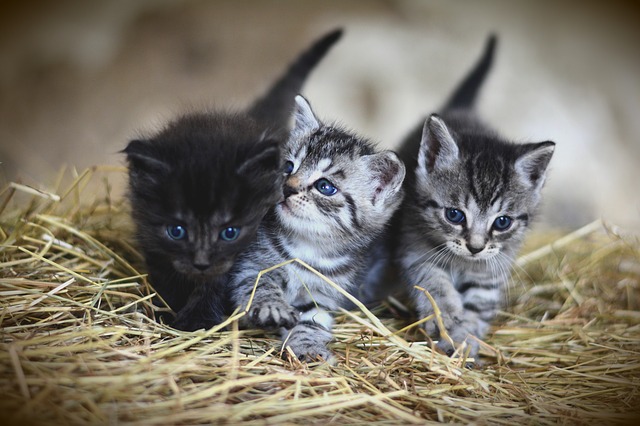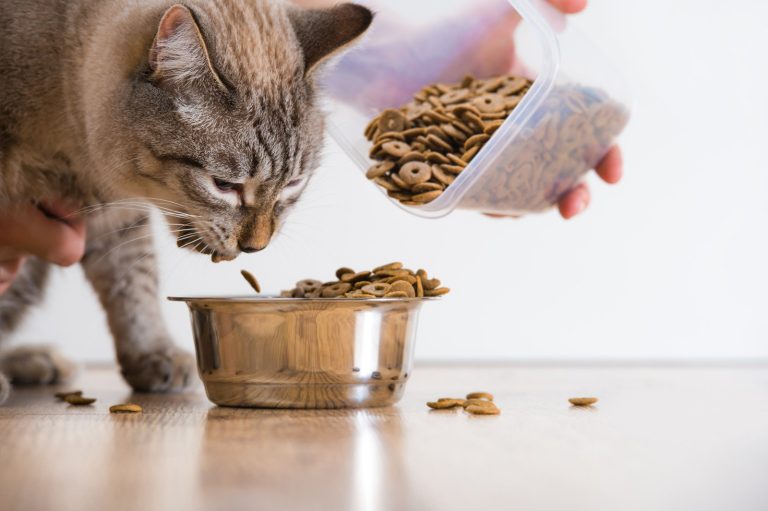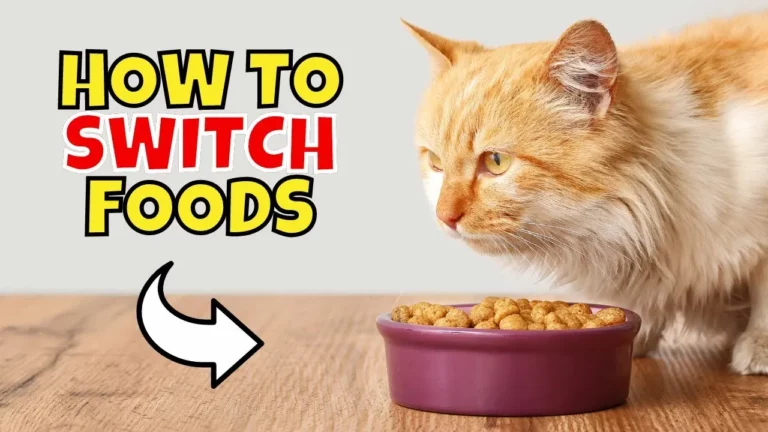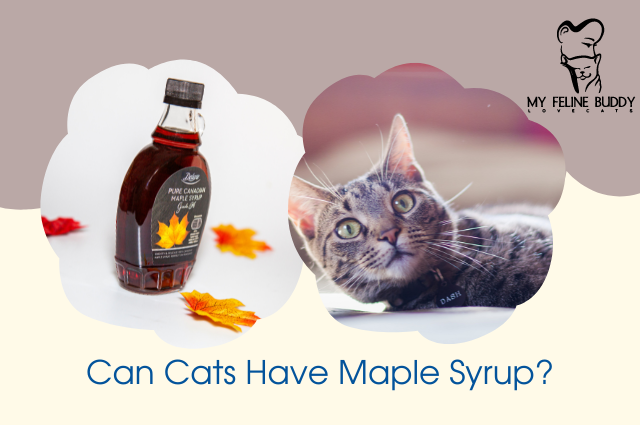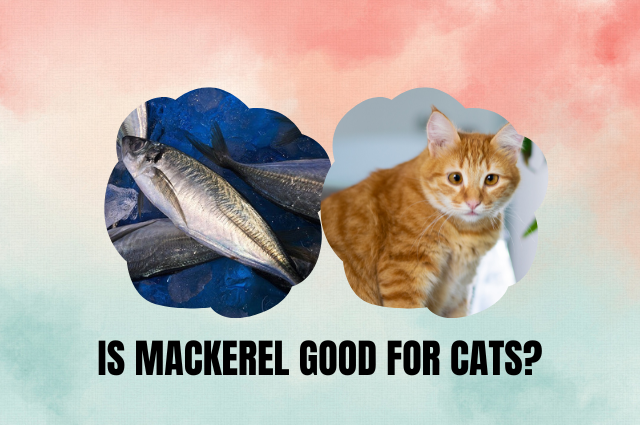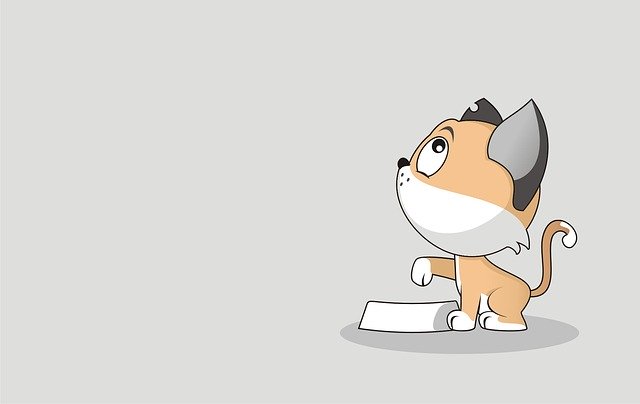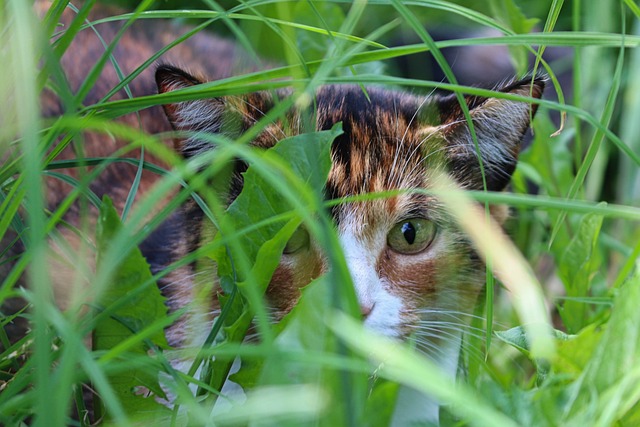Kitten Nutrition 101 – What to Feed for Optimal Growth and Development
In today’s post, we will discuss how and what to feed kittens that are adopted as well as stray and orphaned kittens.
You never know when you will need to take in kittens that are either abandoned or given up for adoption.
We want to equip you for that moment when you need to know what kittens eat especially in the first weeks of life.
Neonatal kittens—those under four weeks old will rely on their mother’s milk or a kitten milk replacer until they adjust to solid foods (dry or wet, kibble or canned).
If you adopt a kitten, chances are the little furball is already weaned from its mother’s milk.
If not, you will need to purchase a kitten milk replacement formula from your local pet store or veterinarian.
Solid food should be introduced gradually into a kitten’s diet, starting at three to four weeks old when their teeth start to show.
Their first solids should be a soft, mushy texture. By three to six months, your kitten should be consuming solid food three times a day. From six to eighteen months, your kitten will start transitioning into an adult feline.
First Week: Mother’s Milk
Kittens often come in groups of two to five called a litter.
You should not be worrying about feeding kittens until around three to four weeks when the queen
You may provide the queen
If the queen is sick or absent, that is when you need to step in.
Caring for orphaned or abandoned kittens in the first week of life is a tremendous responsibility.
If you are the owner of the queen
If there is a threat of transmitting an infection like larval worms from the queen’s milk, it can be better for the health of the kitten to receive kitten milk replacer instead.
If you find a seemingly abandoned kitten or a litter, wait at a safe distance for the queen to return. It can sometimes take a queen
What Do Kittens Eat?
The mother
Kittens need the mother’s colostrum for the first 48 hours at the very least.
In any case, such as stated above that a queen
Cow’s milk is not an option as it contains high levels of casein and lactose leading to diarrhea which can be most fatal to kittens.
If you don’t have instant access to KMR, opt for fresh goat’s milk instead. Infant formula is inferior to cat milk replacers.
Evaporated milk should only be used in emergency situations with 5 parts evaporated milk to 1 part boiled water.
When Not to Feed a Kitten
Kittens should be warm before feeding.
Do not feed a kitten with cold paws and or ears.
Feeding cold kittens can disturb their internal organs which can lead to fatal consequences.
A cold kitten may be suffering from hypothermia or fading kitten syndrome.
You must warm the kitten gradually over 20 minutes to increase their blood sugar level at a steady rate.
Sugar water or diluted maple syrup can help warm the kitten.
If the kitten won’t drink the sweetened water through an eye dropper or syringe, you can rub the solution on its gums.
You can also place a hot water bottle in a towel or a heating pad near the kitten.
Kitten Feeding Supplies:
- Kitten feeding bottles
- Nipple replacements
- Eye dropper or syringe (without needles)
- Kitty milk replacement powder like KMR, Just Born, or Breeders’ Edge
- Clean drinking water to dilute powder formula often in ratios of 1 powder: 2 water.
How Often Should Kittens Eat?
The smallest of kittens will feed every 2 hours, around the clock.
Average-sized newborn kittens will feed every 3 hours. At three to twelve weeks, weaning kittens will feed every 5-6 hours on a combination of milk and solids.
After twelve weeks, kittens should be fully weaned and will have a regular feeding schedule of three meals of solid food and clean drinking water a day. At six months above, cats can eat twice a day.
The frequency of feeding kitten milk replacer depends on the weight of the kitten. Skipped feedings can lead to dehydration so be sure to set the alarm clock at odd times like 12 am, 2 am, and 4 am. Yes, caring for newborn kittens rob us of sleep like a newborn baby. However, this period of sleepless nights will only last during the kitten’s first month.
When feeding kittens, they will stop when they have had enough. If a kitten has not fed in six hours, be sure to call your local veterinarian. The kitten may be at risk of hypoglycemia. Pay extra attention to “poor doersâ€â€”the kittens that are lethargic, losing weight, and do not gain adequate weight. As a rule of thumb, kittens should gain ¼ to ½ oz per day or 3-4 oz per week.
How much should a kitten eat?
Weigh kittens before feeding so you know how much to feed them. Underweight cats can only consume 1 ml per oz of weight. That is, 2 ml for a 2 oz
Complementing with Gruel
Kittens will start teething at three to four weeks. This is when you can introduce canned food or kibble moistened with kitty milk replacer. Still, you should continue to feed milk to a month-old kitten. Add 2 ml per oz of weight (e.g. 14 ml for a 12 oz
How to get a kitten to eat?
Newborn kittens can neither see nor hear. They use their sense of smell to navigate their way to the queen
You can also bottle-feed kittens as long as you can create an adequate-sized hole on the nipple so the milk drops at regular pace. If kittens drink too fast, the milk can enter their airways. If they need to exert too much effort to drink from the bottle, they will drink less.
When weaning “bottle babies,†try feeding them milk on a spoon then transition to a small saucer, and finally mix it with solids to make gruel. You can tempt the kitten to try the food by dipping your finger in the solution and letting your kitten have a taste from your hand.
What human food can kittens eat?
Kittens have distinct dietary requirements compared to their human companions, emphasizing the question, “How long should cats eat kitten food?” They also have a diet different from ours. While a balanced diet for us would require carbs, veggies, and fruits, kittens fare better on a diet of animal protein like chicken and turkey with some fat (which might be better given the cat food ingredients today). Kittens that feed on human food apart from their regular diet are at risk of becoming overweight in their adult
Still, kittens and cats may desire to have a piece of what you are having. Here are some foods that are okay to have in moderation although not necessary as part of a kitten or
Now here are human food kittens should avoid: chocolate, cow’s milk, raisins, grapes, seeds, onions, garlic, alcohol, raw meat, raw dough, raw seafood, raw liver, bones, and dog food, among others.
Can kittens eat tuna?
Tuna should not be part of a kitten’s regular diet but kittens can eat tuna as a treat sometimes. Canned tuna in water is fine but not in oil or brine. Overconsumption of tuna can lead to severe nutrient deficiencies, mercury poisoning, and yellow fat disease. Kittens are at a higher risk of developing yellow fat disease than adult cats. It is increasingly becoming common too.
Telltale signs of a kitten suffering from yellow fat disease or steatosis include weight loss, fever, loss of appetite, and abdominal pain. Besides, canned tuna for human consumption lacks substantial nutrients for a kitty’s diet. Even canned tuna for adult cats are not designed for the consumption of kittens given the risks.
Can kittens eat egg?
Kittens can eat hard-boiled eggs and unsalted scrambled eggs that are not soft or runny. Raw eggs contain the avidin protein that can lead to vitamin B7 deficiency. Raw eggs may also contain e.coli, salmonella, and other contaminants that can cause kitten diarrhea.
Can kittens eat bananas?
Banana poses a choking hazard to kittens but it is not toxic to them. You may attempt to give thin slices of banana or mashed banana to your kitten albeit most cats dislike the scent of banana. In some cases, vomiting or stomach pain will follow after eating banana. Other cats that develop an unlikely taste may try bananas with no fuss.
Bananas are rich in potassium but high in carbohydrates. Kittens and cats don’t need those extra carbs as they fare better on a protein-rich diet with substantial fat. Even kibble with high amounts of carbs should be avoided for a kitten’s regular diet. Bananas are also high in sugar which can lead to
Can kittens eat bread?
One slice of bread contains 60 to 80 calories, which is as much calories as a three-week old kitten would need without the necessary nutrients. It is wise to avoid giving your kittens bread from the onset. Certain types of bread can also be toxic to kittens and cats including bread with garlic, raisins, cheese, butter, chocolate, or Nutella spread.
